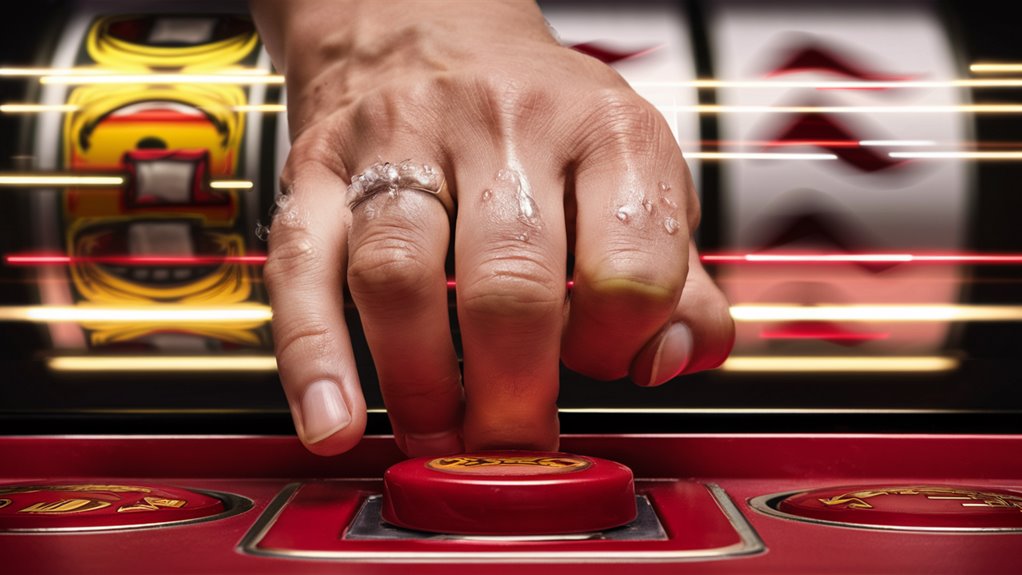How Gambling and Quick Actions are Linked

The Brain Parts at Play
Gambling problems and quick acts are tied by brain paths, mostly in the front brain – the main area for choices and behavior control. These ties make a cycle that hits how well an individual can keep up good gambling habits. Uncovering Hidden Depths Beneath Shallow Reads
Brain Signals’ Role
When gambling, the brain sends out dopamine in the brain’s reward spot, setting off strong feel-good reactions that often beat sensible thinking. This brain response builds a pull that can lower a person’s control on urges. With more gambling, brain changes grow these hooks, making it harder to stop the gambling pull.
Signs and Actions
Easy-to-see signs of weak impulse control in gambling are:
- Moving to higher risks
- Ongoing issue with waiting for rewards
- Many failed tries to cut down gambling
- Betting a lot even with bad results
- Thinking a lot about chances to gamble
Treatments That Work
Thinking Therapy (CBT) and mindfulness have shown good results in getting better impulse control. These methods help fix brain paths and make decision-making healthier. Other ways to help include:
- Facing the fears therapy
- Changing behavior steps
- Stress control training
- Joining support groups
- Money advice
Knowing how gambling and impulse link gives key insights for stopping and treating the issues.
Inner Brain Paths and Gambling Urges: How They Link
Brain’s Reward System and Gambling Acts
The deep workings of gambling pulls tell us about close ties between the brain’s reward spot and choice controls. Swapping Reel Patterns for Technicolor Jackpots
The brain’s reward hub and dopamine center send out dopamine when gambling, pushing a strong chemical pull that bolsters betting actions. These processes are much like those seen in other addictions.
Front Brain’s Role and Control of Urges
The front brain, important for controlling urges and making choices, can get greatly hit by strong reward signs.
Ongoing gambling deeply changes brain circuits, lowering a person’s power to hold back betting pulls.
The emotion center’s reaction to gambling links high feelings of fun and wait-for-it feelings with gambling.
Close Wins and Brain Changes
Studies show that nearly winning in gambling wakes up brain reactions very close to real wins, showing why gambling goes on even with losses growing.
The brain’s flexibility grows these paths by often being exposed, making a harder-to-break cycle that is a big challenge in getting better.
Modern treatments now focus on making the front brain stronger while handling dopamine urges with proven methods.
Signs of Weak Impulse Control
How to Spot Early Signs of Low Impulse Control

Main Behavior Signs
Brain research spots clear signs of weakened impulse control. These signs show up in specific gambles and daily acts. Transforming Small Sparks Into Flaming Hands
Major Signs to Watch
A key sign is the hard time waiting for rewards, seen as a strong need for quick rewards.
Risk-taking grows more and more, often with bigger bets and quick money choices.
Mood swings show up as quick shifts between high fun and deep upset, mostly after losses.
More than Just Gambling
Low control over urges often goes into many parts of life. Key signs include:
- Many failed tries to control bad habits
- Always thinking about gambling or looking for rewards
- Lying about what they do and money use
- Frequent money needs from borrowing
- Not handling work, family, or personal duties well
When many signs come up together over time, this points to a possible impulse control issue needing fast expert help and steps to get better.
Stopping the Addictive Cycle
How to End the Cycle: Full Steps to Beat Gambling Issues
Phase 1: Knowing It and Self-Knowing
Getting to know about gambling problems starts with seeing personal triggers and behavior patterns.
Keeping a full record of addiction helps track key points like:
- How often and when gambling happens
- What feelings and thoughts come up 공식 검증 방법 보기
- Money effects and how money is spent
- Places and people that push gambling
